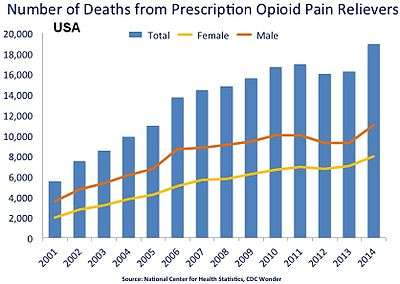Opioid replacement therapy
Opioid replacement therapy (ORT) (also called opioid substitution therapy (OST) or opioid maintenance therapy) is a medical treatment that involves replacing an illegal opioid, such as heroin, with a longer acting but less euphoric opioid; methadone or buprenorphine are typically used and the drug is taken under medical supervision.[1] Some formulations of buprenorphine incorporate the opiate antagonist naloxone during the production of the pill form to prevent people from crushing the tablets and injecting them, instead of using the sublingual (under the tongue) route of administration.[1]
In some countries, such as Switzerland, Austria, and Slovenia, patients may be treated with slow-release morphine when methadone is deemed inappropriate due to the individual's circumstances. In Germany, dihydrocodeine has been used off-label in ORT for many years, however it is no longer frequently prescribed for this purpose. Extended-release dihydrocodeine is again in current use in Austria for this reason. Research into the usefulness of piritramide, extended-release hydromorphone (including polymer implants lasting up to 90 days), dihydroetorphine and other drugs for ORT is at various stages in a number of countries. The prescription of medicinal heroin or morphine for people with long-term addictions, particularly those who have difficulty with methadone programs, is also legal in some countries.[1]
Rationale

The driving principle behind ORT is the program's capacity to facilitate a resumption of stability in the user's life, while the patient experiences reduced symptoms of drug withdrawal and less intense drug cravings; however, a strong euphoric effect is not experienced as a result of the treatment drug.[1] In some countries (not the USA, UK, Canada, or Australia),[1] regulations enforce a limited time period for people on ORT programs that conclude when a stable economic and psychosocial situation is achieved. (Patients suffering from HIV/AIDS or Hepatitis C are usually excluded from this requirement.) In practice, 40-65% of patients maintain complete abstinence from opioids while receiving opioid replacement therapy, and 70-95% are able to reduce their use significantly, while experiencing a concurrent elimination or reduction in medical (improper diluents, non-sterile injecting equipment), psychosocial (mental health, relationships), and legal (arrest and imprisonment) issues that can arise from the use of illicit opioids.[1]
Success rate
ORT has proven to be the most effective treatment for improving the health and living condition of people experiencing problematic illicit opiate use or dependence, including mortality reduction[1][3] and overall societal costs, such as the economic loss from drug-related crime and healthcare expenditure.[1] Opioid Replacement Therapy is endorsed by the World Health Organization, United Nations Office on Drugs and Crime and UNAIDS as being effective at reducing injection, lowering risk for HIV/AIDS, and promoting adherence to antiretroviral therapy.[4]
Challenges
Russia
A 2008 New York Times article announced that methadone would not be legally available in Russia as an option for opiate-dependent citizens. A February 2008 conference, partly organized by Dr. Vladimir D. Mendelevich, director of the Institute for Research Into Psychological Health, discussed the subject, but health officials remained unconvinced "that this [methadone] is effective." Since the demise of the Soviet Union, Russian governments have been struggling with the intravenous use of illicit heroin and, in 2008, the estimated number of opiate-dependent Russians was between three million and six million. Also in 2008, the leading cause of the Russian HIV epidemic was injecting drug use, responsible for around 66 percent of new cases in 2006, and the numbers of new infections were still rising at the time.[5]
In early April 2014, following the official annexation of Crimea, Russian officials informed around 800 methadone recipients that their prescriptions will cease due to the illicit sale of the drug by its users. One methadone user from Sevastopol stated to the media: "It is happening at such a pace that it's going to be a massacre here."[6] The Ministry of Health of the Russian Federation claimed that the number of deaths among recipients of methadone in Crimea declined significantly in 2014.[7] In contrast, the United Nations AIDS Envoy has stated that the change in policy resulted in the death of between 80 and 100 former methadone recipients.[8]
Further options
Extended-release morphine
According to a Cochrane review in 2013, extended-release morphine confers a possible reduction of opioid use and with fewer depressive symptoms but overall more adverse effects when compared to other forms of long-acting opioids. Retention in treatment was not found to be significantly different.[9]
See also
References
- 1 2 3 4 5 6 7 8 Richard P. Mattick et al.: National Evaluation of Pharmacotherapies for Opioid Dependence (NEPOD): Report of Results and Recommendation
- ↑ Overdose Death Rates. By National Institute on Drug Abuse (NIDA).
- ↑ Michel et al.: Substitution treatment for opioid addicts in Germany, Harm Reduct J. 2007; 4: 5.
- ↑ WHO; UNODC; UNAIDS (January 2013). WHO, UNODC, UNAIDS technical guide for countries to set targets for universal access to HIV prevention, treatment and care for injecting drug users – 2012 revision. p. 13. ISBN 978 92 4 150437 9.
- ↑ Michael Schwartz (22 July 2008). "Russia Scorns Methadone for Heroin Addiction". The New York Times. Retrieved 5 April 2014.
- ↑ Peter Walker (4 April 2014). "Crimea: no more McDonald's or methadone after annexation". The Guardian. Retrieved 5 April 2014.
- ↑ "The Ministry of Health has denied the UN report on increased mortality among heroin addicts in Crimea". Interfax. 21 January 2015. Retrieved 25 December 2015. (Russian)
- ↑ "UN: Nearly 100 Drug Users Died in Crimea After Russia Closed Methadone Program". The Moscow times. 21 January 2015. Retrieved 11 January 2016.
- ↑ Ferri, Marica; Minozzi, Silvia; Bo, Alessandra; Amato, Laura; Ferri, Marica (2013). "Slow-release oral morphine as maintenance therapy for opioid dependence". doi:10.1002/14651858.CD009879.pub2.